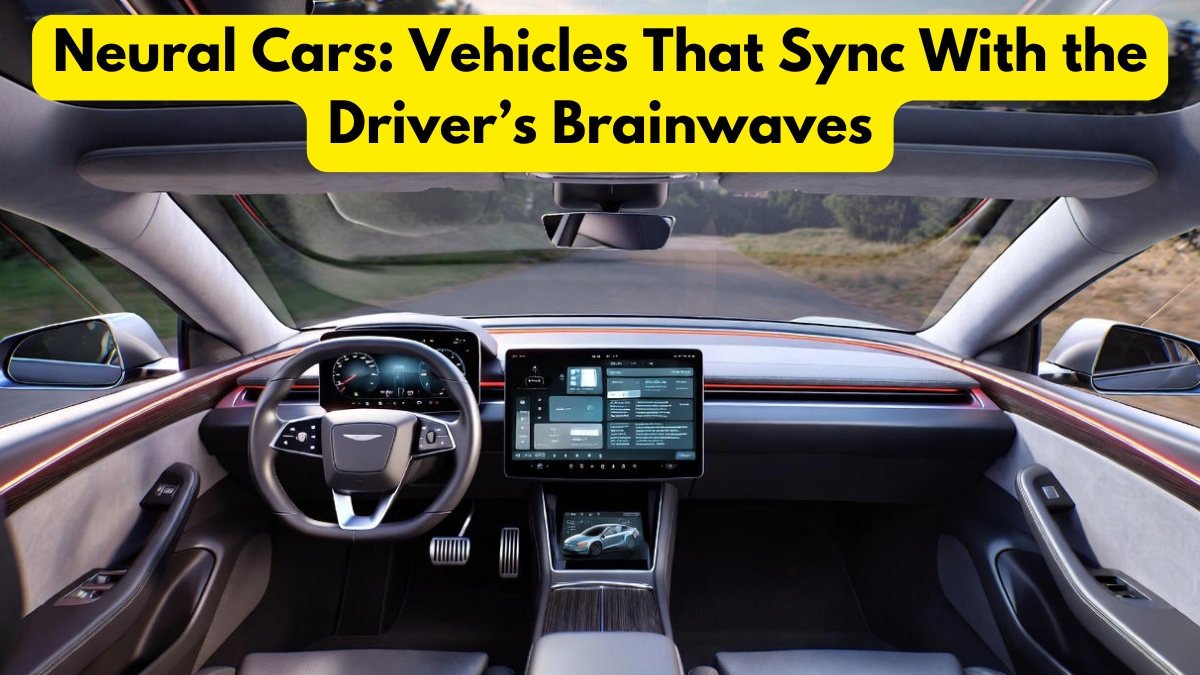The future of mobility is entering an extraordinary new phase with the evolution of neural cars, a groundbreaking technology that enables vehicles to interpret human thoughts and intentions. Unlike traditional autonomous vehicles or advanced driver-assist systems, neural cars operate through direct communication between the human brain and the vehicle’s onboard systems. This remarkable innovation, powered by sophisticated brainwave driving technology, promises safer roads, quicker reaction times, and an entirely new driving experience. As research accelerates, the idea of cars responding to your thoughts is no longer a science-fiction fantasy but an emerging reality.

How Neural Cars Are Changing the Driving Experience
At the heart of neural cars is the concept of translating neural signals into actionable commands. Instead of relying solely on physical controls, these vehicles use brainwave driving technology to detect emotional states, driver focus levels, and subconscious reactions. This means cars can slow down, change lanes, or even stop before the driver physically responds.
With advanced sensors and AI-driven systems, neural cars are designed to reduce human error—the leading cause of road accidents. By instantly recognizing brainwaves associated with stress, danger perception, or fatigue, the vehicle can intervene proactively. In high-pressure situations, brainwave driving allows the car to act faster than the human nervous system, significantly improving road safety.
Technology Behind Neural Cars
The engineering behind neural cars involves an intricate combination of neuroscience, artificial intelligence, and automotive innovation. By integrating neural interfaces with sophisticated AI processors, automakers create a seamless connection between human intention and vehicle control. This synergy with brainwave driving is what makes the system advanced and adaptive.
Below is a table outlining the key components that power neural cars:
| Component | Function | Impact |
|---|---|---|
| EEG Sensors | Detect driver brainwaves | Enables brainwave driving by interpreting neural patterns |
| AI Neural Processor | Converts brain signals into commands | Improves accuracy and driving precision |
| Emotion Recognition System | Tracks stress and cognitive load | Enhances safety and driving comfort |
| Advanced Driver Assistance (ADAS) | Supports autonomous functions | Collaborates with neural input for smoother control |
| In-Car Display & Feedback | Shows real-time mental-state data | Assists the driver in maintaining focus |
With continuous improvements, neural cars become more responsive, intelligent, and capable of learning driver habits. The integration of brainwave driving not only enhances safety but also personalizes the driving environment based on the driver’s mental and emotional state.
Benefits of Neural Cars for Drivers and Society
The benefits of neural cars extend far beyond hands-free control. Their ability to interpret thought patterns and emotions opens opportunities for safer, more efficient transportation systems. The integration of brainwave driving ensures maximum responsiveness, reducing the risk of delayed reaction times.
Key advantages include:
- Faster detection of hazards
- Improved support for disabled or limited-mobility drivers
- Reduction in fatigue-related accidents
- Personalized in-car experiences
- Enhanced mental-state monitoring
- More efficient and intuitive driving
For individuals who may struggle with conventional vehicle controls, neural cars offer an unprecedented level of accessibility. Meanwhile, the broader public benefits from fewer accidents, smoother traffic flow, and more advanced road technology. The synergy of brainwave driving makes transportation not only safer but also more connected to human needs.
Challenges and Future Developments
Despite their promising potential, neural cars are still overcoming challenges related to data privacy, brainwave accuracy, and system calibration. Ensuring that brainwave driving consistently interprets signals correctly requires advanced machine learning and extensive driver profiling. Additionally, automakers must address concerns around cyber-safety, as neural data is highly personal.
However, the future of neural cars remains incredibly bright. Manufacturers and researchers are working to develop systems that adapt to each driver’s cognitive patterns in real time. In the coming years, brainwave driving may allow cars to detect medical emergencies, predict emotional responses, and synchronize with smart-city systems for seamless navigation. These advancements position neural cars as one of the most transformative innovations in modern transportation.
Conclusion
The evolution of neural cars marks a revolutionary shift in how humans interact with vehicles. By merging neuroscience with advanced artificial intelligence, brainwave driving technology creates a driving experience that is more intuitive, responsive, and personalized. With the ability to analyze thoughts, emotions, and mental states, neural cars offer a safer and more adaptive future for mobility. As development continues, these vehicles are set to redefine transportation, making roads smarter, drivers safer, and the journey more connected to the human mind.
FAQs
What are neural cars?
Neural cars are advanced vehicles that use brain-signal detection to interpret driver intentions through brainwave driving technology.
How do neural cars detect brain activity?
They use EEG sensors that read neural patterns and convert them into commands, enabling smart brainwave driving responses.
Are neural cars safer than regular cars?
Yes, neural cars can react faster to danger by reading stress and focus levels, significantly enhancing road safety.
Can people with disabilities use neural cars?
Absolutely. Brainwave driving allows individuals with limited physical mobility to control certain driving functions.
Will neural cars replace traditional driving?
While traditional driving will remain, neural cars will enhance safety and accessibility as the technology evolves.
Click here to learn more